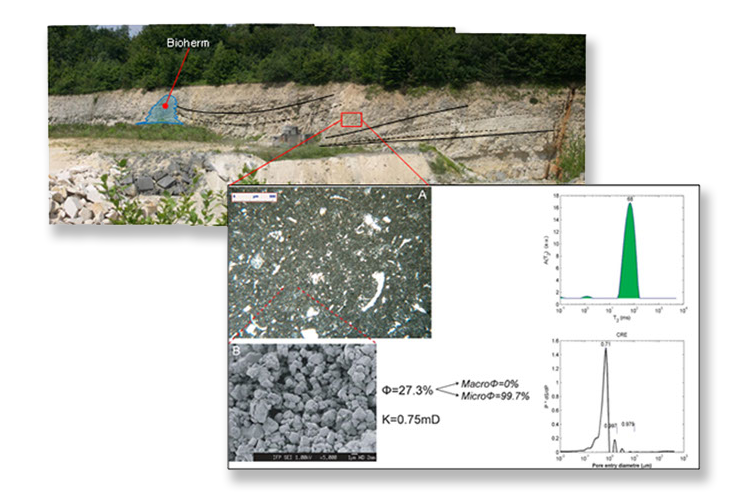JURASSIC CARBONATE PLATFORMS OF NE FRANCE
This 3 to 5-day field course provides an excellent illustration of an integrated workflow leading to high-resolution 3D models, starting with a review of the constraints to the static model acquired from the field scale to the subsurface data, and including sedimentary architectures, and distribution and evolution of petrophysical properties through diagenesis.
The Jurassic outcrops of North-Eastern Paris Basin are exceptional quality analogues for several producing oil fields, especially regarding sequence stratigraphy features and typical carbonate platforms architecture. Recent diagenetic and petrophysical investigation performed on selected outcrops and in equivalent subsurface data provided a unique opportunity of proposing a complete and integrated study of these Jurassic shallow marine carbonates, achieved by a 3D high-resolution reservoir model.


Objective: Recent works carried out on Andra's request (French National Agency for Radioactive Waste Management) allowed a deep geological reappraisal of the Jurassic of the Eastern Paris Basin, and brought new insights about the Jurassic petroleum system. A geological and petrophysical static model was performed over a large area centered on the main zone of interest, along an extended stratigraphic interval (Bajocian to Kimmeridgian).
The aim of this field trip is to follow, (1) through the entire stratigraphic interval or (2) focusing either on the Middle or Late Jurassic, the evolution of the various depositional environments, sedimentary facies, and geometries in a constrained sequence-stratigraphic framework, which represents the skeleton of the geological model. This approach involves several outcrop studies and calls for a constant comparison with related subsurface data (cores, logs, seismic). The evolution of carbonate platforms morphology and associated stratigraphic architectures are interpreted to define the sedimentary-inherited heterogeneity in the model.

In parallel with the sedimentological and stratigraphic outcrop study, a review of the diagenesis which affected the carbonates is proposed so as to understand porosity and permeability distributions. Routine Core Analysis data and well log petrophysical data are integrated within the geological model to build a static model.
All the key steps for robust static model construction are reviewed during the trip, always tying back geology and petrophysics.
Who should attend: Geologists, geophysicists, petrophysicists or reservoir engineers.
Fundamentals of carbonate sedimentology may be a useful prerequisite. However, a brief training/reminder of sedimentological logging in carbonates is scheduled during the trip, including a review of classical carbonate facies (textures, faunal content, sedimentary features).
